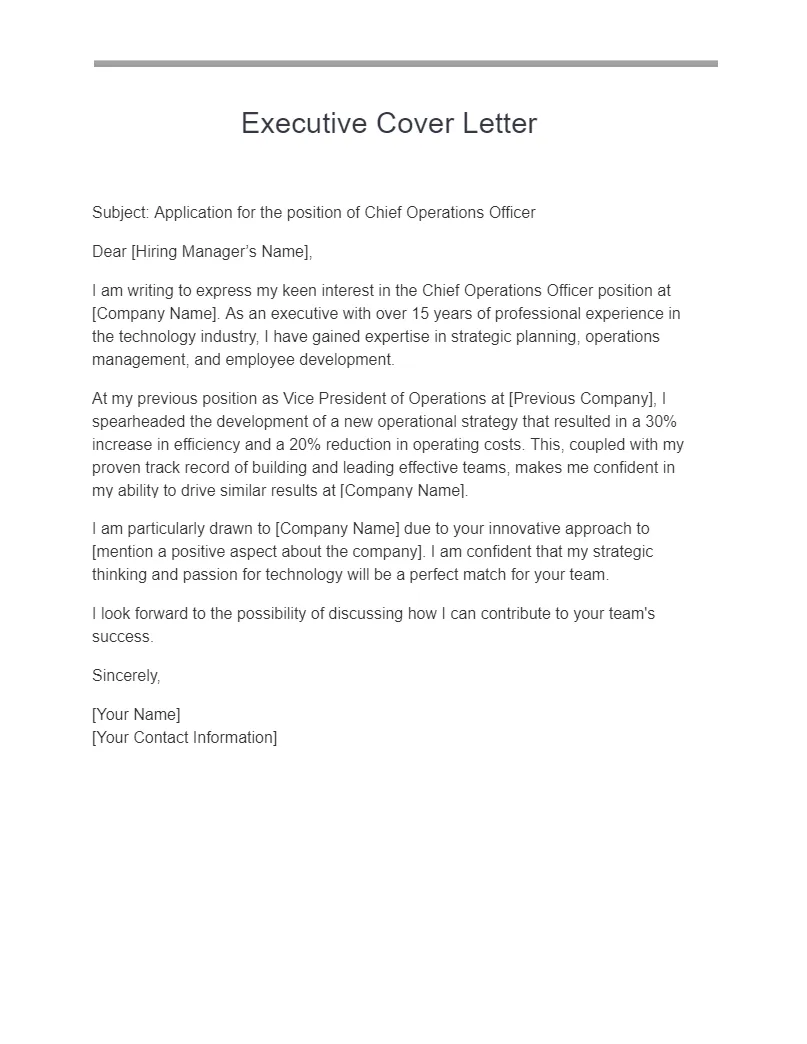What is an Education Cover Letter
An education cover letter is a crucial document that accompanies your resume when applying for jobs in the education sector. It’s a personalized introduction to the hiring manager. It gives you space to showcase your qualifications, skills, and passion for education. Unlike a resume, which offers a factual overview of your experience, a cover letter lets you express your personality. It helps you explain why you’re a good fit for the specific role and school. It also demonstrates your understanding of the school’s mission and values. It’s your chance to make a strong first impression and stand out from other applicants. (Image education-cover-letter-header.webp)
Purpose of Education Cover Letter
The main goal of an education cover letter is to persuade the hiring manager to look at your resume and consider you for an interview. It provides context to your resume. It explains how your experiences and skills match the job requirements. It also lets you elaborate on your achievements and express your enthusiasm for the position and the school. A well-written cover letter shows off your communication skills and demonstrates your professionalism. This helps you stand out from other applicants.
Key Components
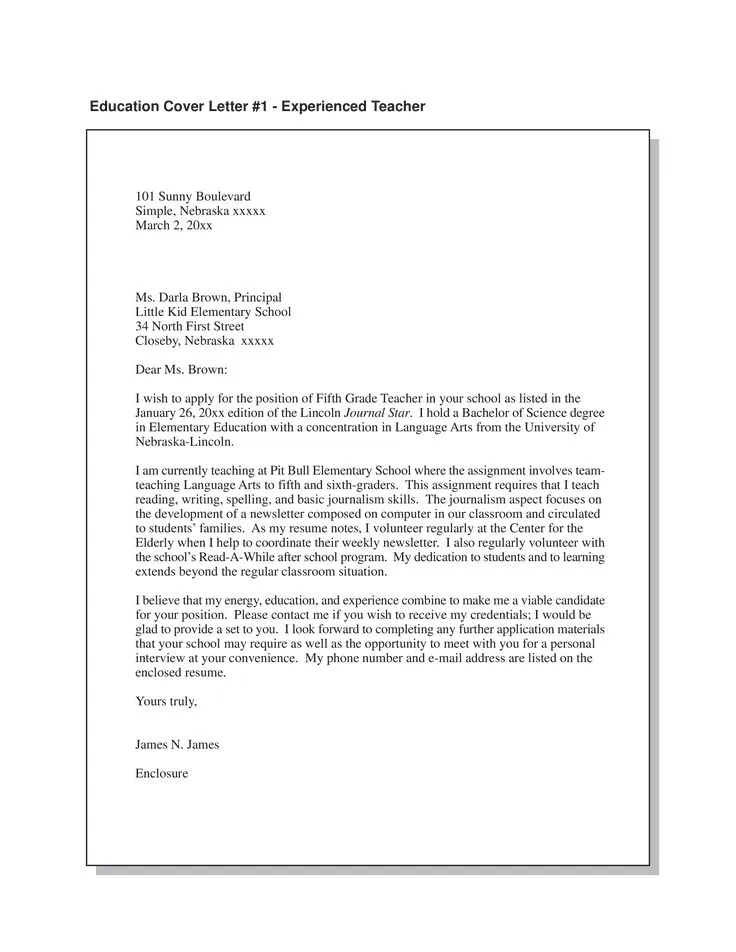
An effective education cover letter has several key components. Each of these components plays a vital role in conveying your suitability for the position. These parts work together to create a compelling narrative that grabs the hiring manager’s attention. Knowing about these components is essential for crafting a cover letter that makes a positive impact and increases your chances of getting an interview.
Header Section
The header section is the first element of your education cover letter. It sets the stage for the rest of the document. It should include your contact information, the date, and the recipient’s information. This part ensures the hiring manager can easily contact you and shows your attention to detail and professionalism. Proper formatting and accuracy in this section are crucial for creating a good first impression.
Your Contact Information
Include your full name, phone number, email address, and optionally, your LinkedIn profile URL. Make sure your contact information is current and professional. Verify your email address is appropriate for professional correspondence. Ensure your voicemail message is also professional. Presenting your contact details clearly and accessibly is vital for communication.
Date and Recipient Information
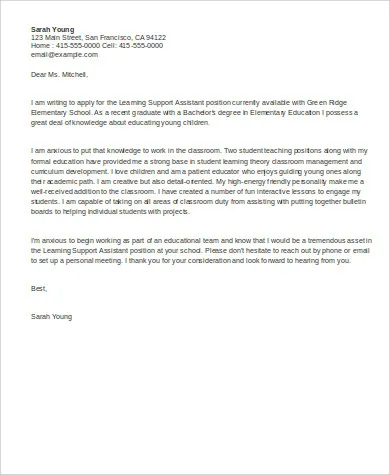
Below your contact information, include the date you’re writing the letter. Then, add the recipient’s information, like the hiring manager’s name, title, and the school’s address. If you can’t find the hiring manager’s name, address the letter to the hiring committee or the principal. Researching the specific person and the school shows your initiative and genuine interest in the position.
Salutation
Start your cover letter with a professional salutation. Ideally, address the hiring manager by name “Dear Mr/Ms/Mx [Last Name].”. If you don’t know the hiring manager’s name, you can use a general greeting. For example, “Dear Hiring Committee” or “Dear Principal.” Avoid overly casual greetings such as “Hi” or “Hello.” The salutation sets the tone for your letter, so it should always be formal and polite.
Body Paragraph 1
The first body paragraph is your introduction. State the position you’re applying for and briefly mention where you saw the job posting. You should also include a short statement about your enthusiasm for the position and the school. This paragraph sets the stage for the rest of your letter. It makes it clear why you’re applying and grabs the hiring manager’s attention from the start.
Highlighting Your Qualifications
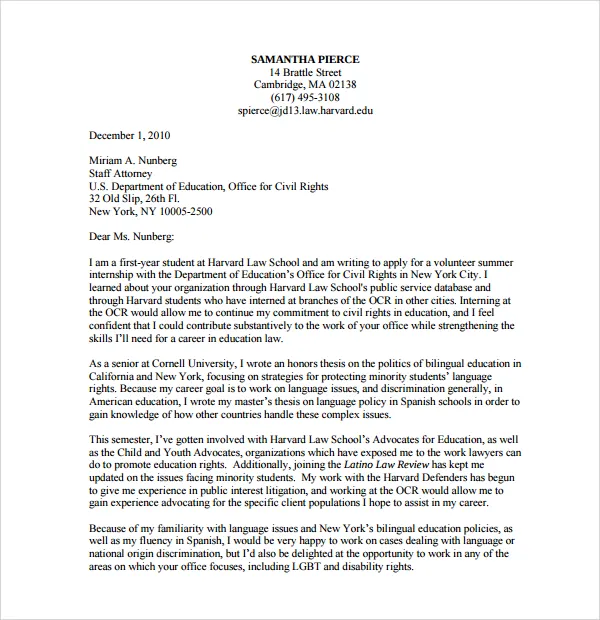
In the following paragraphs, focus on your qualifications and how they match the job requirements. Carefully review the job description. Identify the key skills and experiences the school wants. Provide specific examples from your past experiences that show you have these skills. Tailor each cover letter to the specific job. Highlight the most relevant experiences and skills (Image education-cover-letter-qualifications.webp).
Quantify Your Accomplishments
Use measurable achievements to make your claims more convincing. Instead of saying you “improved student performance,” say you “increased student test scores by 15%.” Measurable data gives concrete evidence of your abilities. It makes your accomplishments more impactful. Use numbers, percentages, and statistics to demonstrate your successes and show the value you’d bring to the school.
Body Paragraph 2
In the second body paragraph, provide more details about your skills and experiences. Provide examples. This is a great chance to show your teaching methods, classroom management techniques, and any special projects or initiatives you’ve led. The main point is to show how your skills and experiences benefit the students and the school.
Demonstrate Your Passion for Education
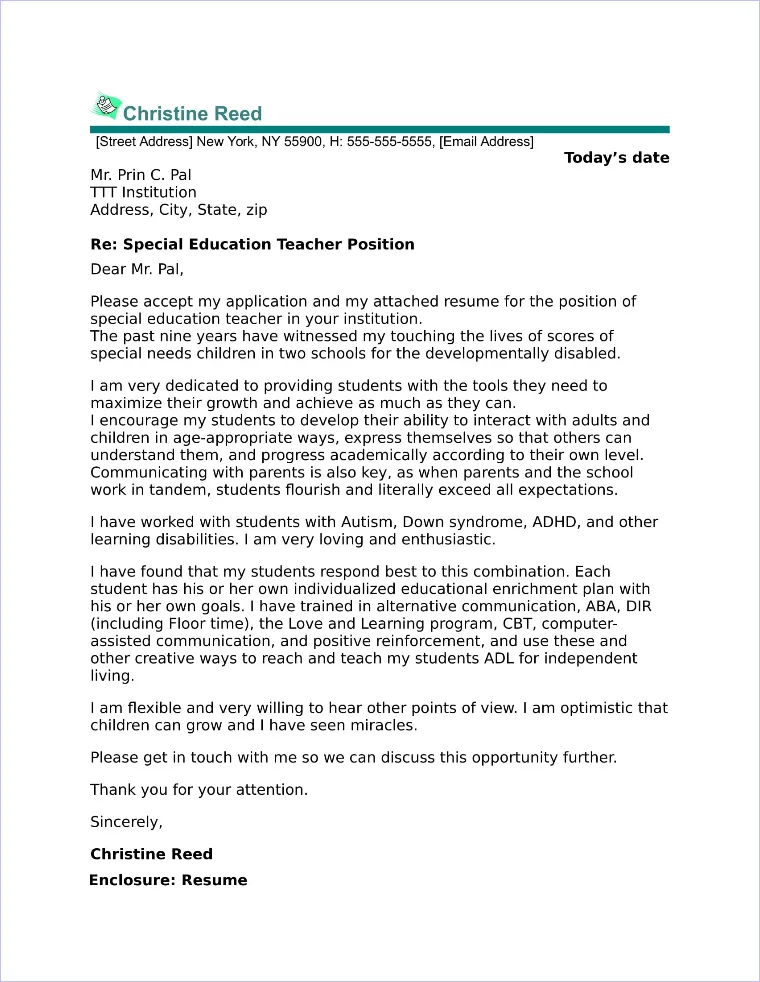
Express your passion for education and your dedication to student success. Share your teaching philosophy and how you create a positive and engaging learning environment. Show your understanding of child development and your ability to meet diverse learning needs. Be sincere and let your enthusiasm for education shine through (Image education-cover-letter-passion.webp).
Showcase Relevant Skills
Highlight skills directly related to the job description. Include skills in curriculum development, lesson planning, assessment, classroom management, and any other relevant areas. Show how you’ve successfully used these skills in the past and how they contributed to student achievement. Tailor your skills to the specific requirements in the job posting.
Body Paragraph 3
In the final body paragraph, briefly restate your interest in the position and the school. This is your chance to summarize your key qualifications and highlight your alignment with the school’s values and mission. Make a strong concluding statement that reinforces why you’re the best candidate for the role. This final paragraph should leave a lasting positive impression.
Call to Action
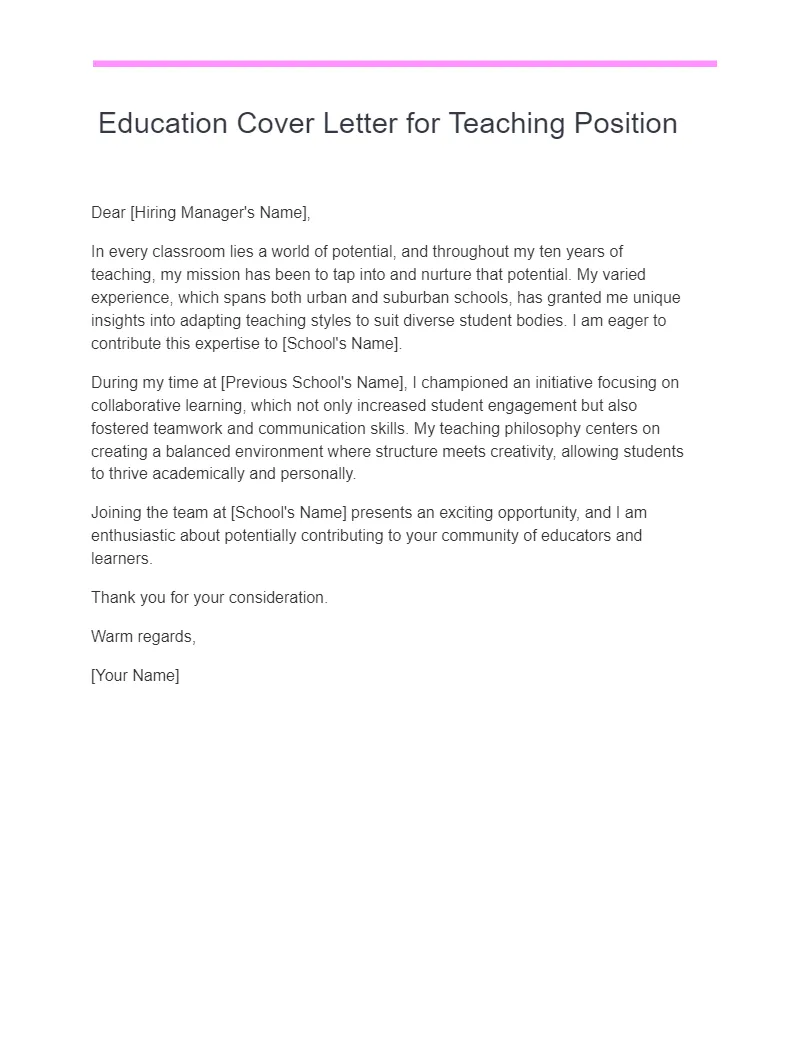
Include a call to action. For example, express your availability for an interview and your eagerness to discuss your qualifications further. Make it easy for the hiring manager to contact you. You can also say you’ve attached your resume for their review. This demonstrates your initiative and proactive approach to the application process.
Closing
End your cover letter with a professional closing such as “Sincerely,” or “Respectfully,” followed by your full name. Ensure the closing matches the tone of your letter. The closing provides a polite and professional conclusion, leaving a good final impression. Proofread the entire letter before submitting it to catch any errors.
Formatting and Style
The format and style of your cover letter should be professional and easy to read. Use a standard font such as Times New Roman or Arial, with a font size of 11 or 12 points. Keep the letter concise, ideally one page long. Use clear and concise language and avoid jargon. Organize the information logically, with well-defined paragraphs and headings. A clean and well-organized cover letter will make a good impression on the hiring manager (Image education-cover-letter-formatting.webp).
Proofreading and Editing
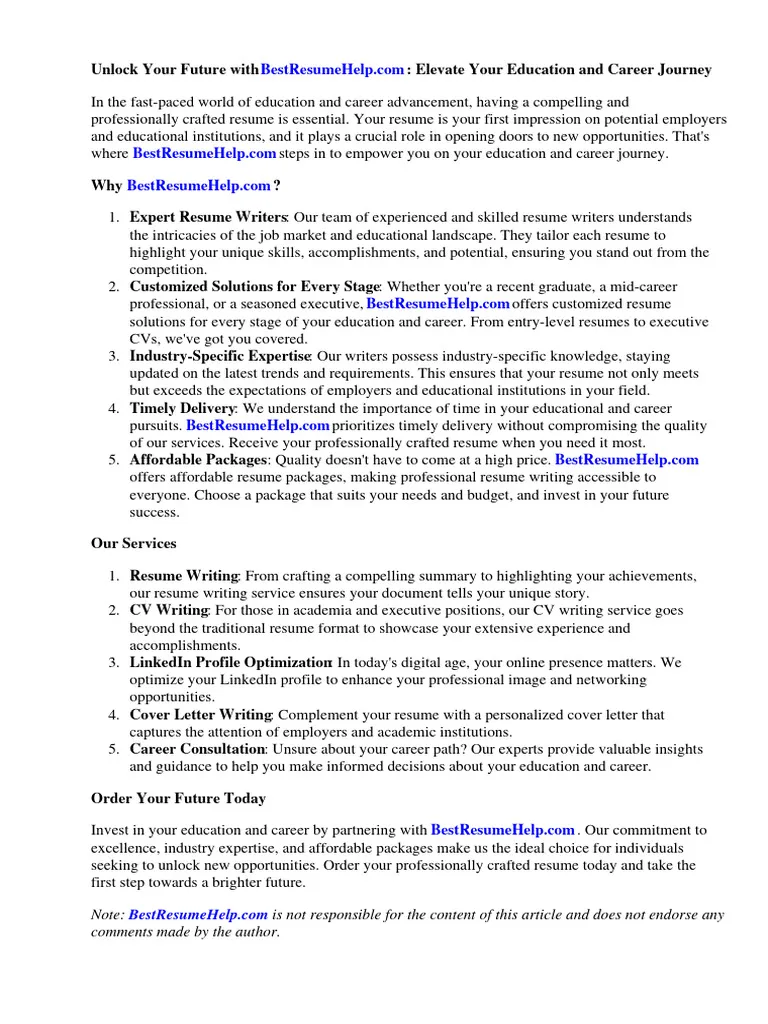
Before you submit your cover letter, carefully proofread it for any mistakes in grammar, spelling, or punctuation. Mistakes can create a bad impression and undermine your credibility. Consider having a friend, family member, or career counselor review your cover letter for clarity and accuracy. Careful proofreading ensures your professionalism and attention to detail.
Common Mistakes to Avoid
Avoid common mistakes that can negatively impact your application. These include using generic cover letters, focusing only on yourself instead of the school’s needs, and using unprofessional language. Also, avoid providing too much information already in your resume. Tailor your cover letter to each specific job. Focus on how your skills and experiences align with the school’s requirements. Proofreading and editing are essential to avoid making a bad impression on the hiring manager (Image education-cover-letter-mistakes.webp).
Example of an Education Cover Letter
Here’s a sample cover letter you can adapt to your needs: [Your Name] [Your Address] [Your Phone Number] [Your Email Address] [Date] [Hiring Manager Name] [School Name] [School Address] Dear Mr/Ms [Last Name], I am writing to express my strong interest in the [Position Name] position at [School Name], as advertised on [Platform]. With [Number] years of experience in education and a strong commitment to student success, I am confident I possess the skills and passion to excel in this role. In my previous role at [Previous School Name], I successfully [quantifiable achievement], and I also developed and implemented [innovative program]. I am particularly drawn to [School Name]’s focus on [specific value/mission], which aligns perfectly with my teaching philosophy. Thank you for considering my application. I have attached my resume and welcome the opportunity to discuss my qualifications further. Sincerely, [Your Name] (Image education-cover-letter-example.webp)
